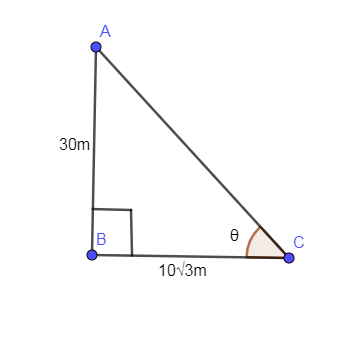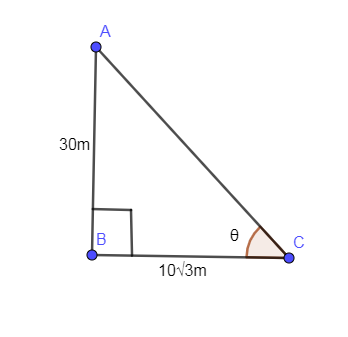Question
Question: If a tower is 30m high, casts a shadow of \(10\sqrt{3}m\) long on the ground, then finds the value o...
If a tower is 30m high, casts a shadow of 103m long on the ground, then finds the value of angle of elevation of sun?
Solution
Hint: The tower, the shadow and the line joining the top of the tower to the end of the shadow constructs a right angled triangle. We know the length of the base and the height of the triangle then using tanθ, we can find the angle of elevation of the sun.
Complete step-by-step answer:
It is given that the height of the tower is 30m and the length of the shadow is 103m.
The below diagram is showing the height of the tower (AB), the shadow of the tower (BC) and angle of inclination of the sun is given by θ.

In the above right angled triangle, right angled at B,
tanθ=BP
In the above formula, “P” stands for perpendicular corresponding to angle θ and “B” stands for the base corresponding to angle θ so using this formula in the above triangle.
In the above triangle, P=30m;B=103mso substituting these values in the above equation we get,
tanθ=10330⇒tanθ=33=3
We know that, tanθ=3 when θ=600 so the above equation is reduced to:
θ=600
From the above solution, we have found the angle of elevation of the sun is 600.
Note: The point to be noted here is that the shadow lies on the floor so the shadow in the diagram is BC not AC. You might get confused that the shadow is AC but it is BC and the angle of elevation of the sun is ∠ACB not ∠BAC.

